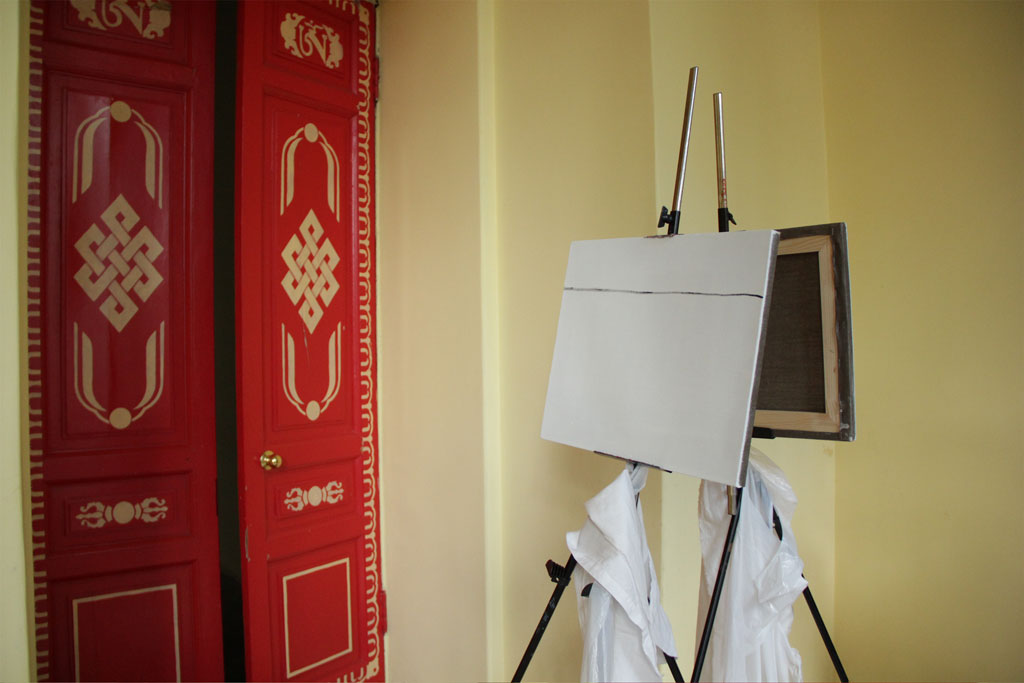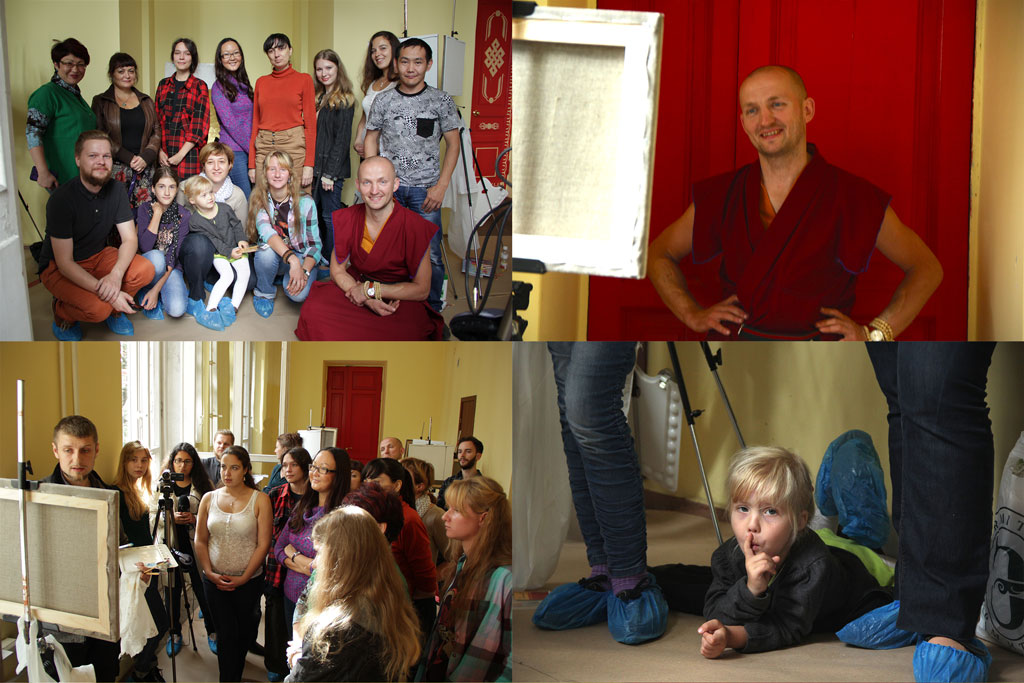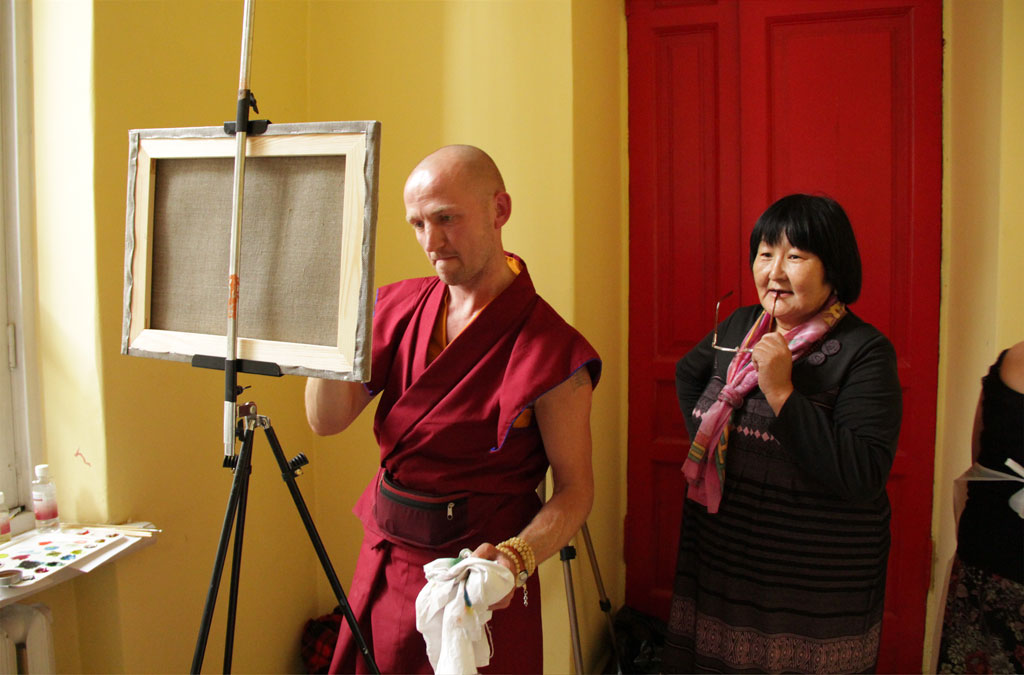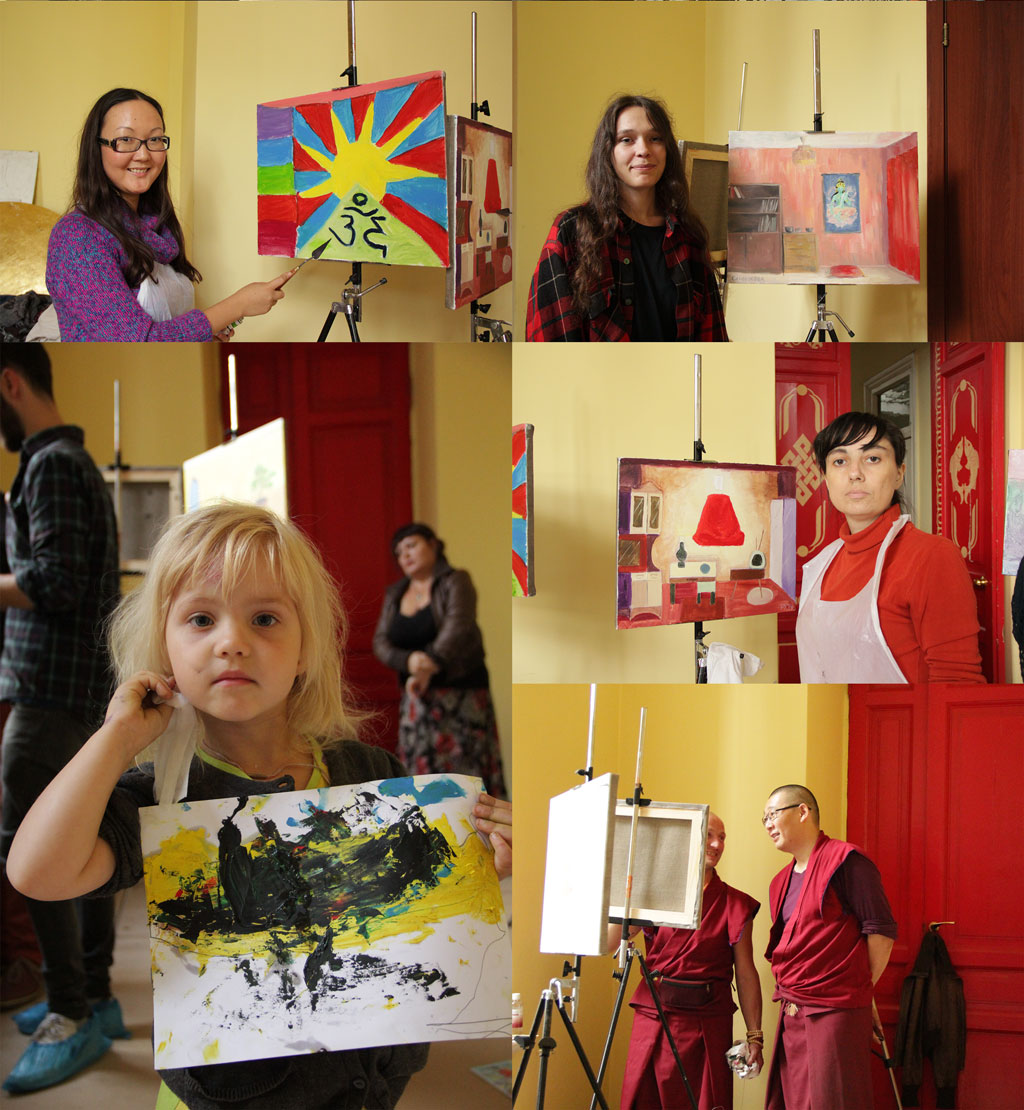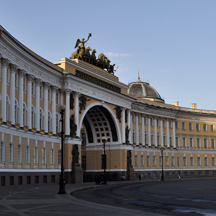
The European Biennial of Contemporary Art
28 June 31 October 2014
St. Petersburg, Russia The State Hermitage Museum
Alexander Dashevsky
Technique: Painting
Location: St. Petersburg Buddhist temple "Datsan Gunzechoinei"
Among the functions that contemporary art is burdened with and is one of its most important qualities - communication. Ideally, an artistic statement - is a language, bringing a message from one social, ethnic or religious group to another. This is especially significant when there is an obvious or hidden hostility between groups, when the dialogue is difficult due to fear or prejudice. Meanwhile, in the modern reality of Russia, the language of contemporary art and its media evoke emotion in a spectrum from ironic distrust to open, active rejection.
One way to overcome this alienation is to share in the process of creating art. The workshop encouraged just this. The group had to create a piece about themselves, in order discuss the idea of what sort of aspect of oneself does one believe the external viewer would find interesting. In turn, the artist is interested a new audience, to be in direct contact with people who are not directly from the world of contemporary art. Such a dialogue requires the utmost simplicity and clarity of the terms of their positions, on the other hand - increased sensitivity (including formal) to unfamiliar content.
Near St. Petersburg is the Datsan Gunzechoinei, a temple with a house which was initially specially built as a dormitory for the llamas. In the 1930s the inhabitants of this building gradually disappeared, having been sent to prisons and camps. Few survived. The house is now inhabited by ordinary residents of the suburbs.
A group of twelve llamas and parishioners received twelve canvases to make an imaginary room from this original house. Dashevsky took inspiration from Thomas Hirschhorn's Abshlag - a large scale installation where it seems that a block of six 70s soviet communal flats have been sliced in two right in the middle of the General Staff Building for MANIFESTA 10. The local artist focused on the dialogue between Russia of the twentieth century in comparison to today and on the idea of historical memory, linking Hirschhorn’s small personal residences to the historical territory of the Datsan Gunzechoinei as a place of residence, since the entire lama Buddhist community lived here before Stalin’s repressions. Everyone was encourage to think about what would happen in these areas if repression did not affect the life within them, to wonder what is going on there now, whether the walls remember the lives of their native inhabitants? After everyone had painted their room, the canvases were assembled together as a installation of a single building. It serves as both a monument of innocent victims, and expresses the hope that this will never happen again.
